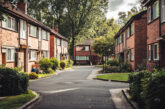
In this regular column, ‘Dr Zzeus’ Tom Brookes, MD of Zzeus Training and chairman of the FSA, will answer your questions related to fire safety compliance. This month’s question covers fire detectors…
Q. I have recently been asked to look at a fire alarm in a building, which is a category BS 5839-1:2017 L1 system. Correct me if I am wrong, but is an L1 supposed to have detectors everywhere? I have looked at the system, and there are detectors missing from cupboards, a toilet and, worse still, a stairway lobby. Also, are you a real Doctor?
Thank you for your Question, Mr S Ives (Fire Risk Assessor). If you look in Clause 8.2 f of British Standard 5839-1:2017 it states, certain areas may be classed as areas of low risk. The standard states in clause 8.2f, in categories L1 and P1, automatic system detectors should be installed in all rooms of the premises; however, the following rooms may not be protected if they are at low risk of a fire occurring:
- Bathrooms/shower rooms and toilets
- Toilet lobbies and stair lobbies
- Small cupboards less than 1 m2
There are a couple of notes within clause note 8 that state that in some buildings, such as shopping centres and hospitals, toilets may not be low risk because of the risk of arson.
Note 9 states that a riser cupboard that has a fire-stopped floor and ceiling may be considered a cupboard. Note 10 states that detection may be excluded from the same such areas in L2, L3, and L4 category systems.
Now here’s the bit that does not sit comfortably with me: this clause states: ‘these areas need not be protected if they are of low fire risk’ (see 3.33). This means that for a fire alarm engineer to make this decision, they are deciding that the areas are low risk and then signing a document accordingly.
When you look at Clause: 3.33, Low-risk areas or rooms, it states: ‘a room or area that contains very little or no combustible substance and has no ignition sources, which any foreseeable fire is unlikely to spread to cause a threat to escape by occupants or damage to property’.
To me, it is far better for a qualified, competent fire risk assessor to make that decision.
Stair lobbies are one of the areas of low risk that I have highlighted for change in the next update of the standard as I do not feel these should ever be classed as an area of low risk.
Going back to the original question, it would appear that the designer deemed the areas you mentioned as areas of low risk. Shower rooms and bathrooms are fairly easy to judge. However, pay close attention to the cupboards because what is contained in the cupboard may make it high risk –many will contain a consumer unit or a server, or even flammable liquids; all of these would not be of low risk.
Now on to the second part of your question: am I a real Doctor?
The short answer is ‘yes’. I was given an honouree Doctorate in 2014 for the work that I did to help a university with a fire detection system dissertation. It does say ‘Doctor’ on my driving licence etc. but I’ve not really used the title as its honouree. I have just passed a full PhD, however, and am now a fully qualified Doctor. As of this month, I will also be a Professor.
Do you have a question you’d like answered? Email your queries to:Tom@Zzeus.org.uk
To get more details about Zzeus Training and the range of courses on offer, click here








